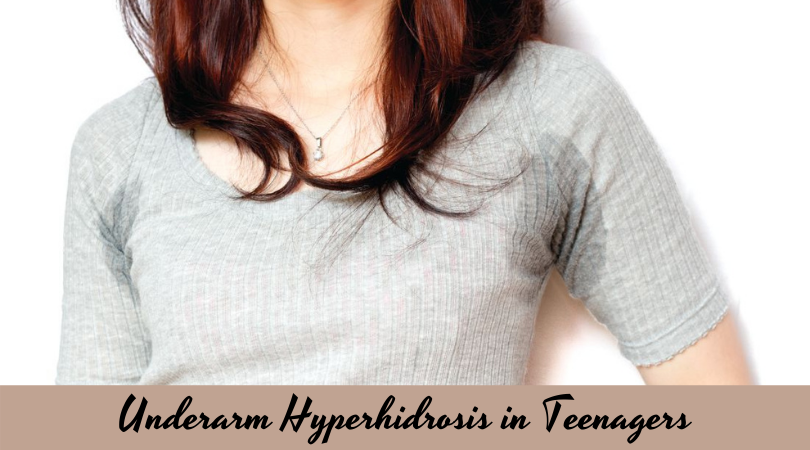 Underarm sweating is common during adolescence, when constant changes in hormone levels affect the sympathetic nervous system that controls the sweat glands. In teenager ages, the endocrine system develops rapidly, so excess sweat production increases several times. If you need some help in overcoming this disease, you are welcome to surf sweathelp.org.
Underarm sweating is common during adolescence, when constant changes in hormone levels affect the sympathetic nervous system that controls the sweat glands. In teenager ages, the endocrine system develops rapidly, so excess sweat production increases several times. If you need some help in overcoming this disease, you are welcome to surf sweathelp.org.
Excessive sweating in young people brings them a lot of trouble. Vulnerable teenagers are embarrassed about the smell from armpits, and stains from sweat on their clothes, and their sweaty cold hands.
There are two types of adolescent hyperhidrosis:
Disorders of the sweating system in adolescents are common and are now well understood. And if the causes of excessive sweating, which is not associated with diseases of other organs and systems, have yet to be clarified, then the methods of its treatment have already been developed.
The sudoriparous system helps a person adapt to external circumstances – hot weather, physical activity. Sweat, evaporating from the body surface, cools it. This is part of the general physiological system of a person along with the respiratory, cardiovascular system and the entire skin.
But there are cases when the body reacts to external stimuli too violently, inadequately. The slightest emotional stress causes profuse sweating, or the same thing happens with little physical exertion. This is already a disorder of the sweating system and it is necessary to understand what causes it.
The exact causes of hyperhidrosis in adolescents are currently not known to scientists. This disease has not yet been fully understood and has an unclear etiology. Excessive sweating can be caused by increased excitability of nerve endings that are directly associated with the sweat glands. In particular, the effect of acetylcholine, a chemical produced in the human body, has been proven. It transmits nerve signals and stimulates the secretion of sweat. Poor genetics can be a negative factor, since 25-40% of people with an established diagnosis of hyperhidrosis are members of families in which the disease has already been recorded.
With the hyperhidrosis development, increased sweating may have a continuous course and not be associated with other factors. It can also appear suddenly. Typically, excessive sweating in this condition is not a physiological response of the body to exercise and does not occur during sleep. Emotional stress, high ambient temperatures and the process of digesting certain foods can cause more sweat secretions to be released than usual.
Sweat secretion in adolescents may pathologically increase in several cases:
You should not independently diagnose a child but visit healthcare institution. Persistent hyperhidrosis requires careful clinical evaluation. It may be necessary to undergo a series of tests to accurately determine the cause of excessive sweating in your child and exclude hidden chronic and acute foci of infection. Through them, an increase in the weat secretion production may be associated with a protective body reaction, which thus seeks to remove toxins as quickly as possible. That is why it is important to differentiate local hyperhidrosis (as an independent clinical diagnosis) from generalized hyperhidrosis (as a symptom of the underlying disease). In most cases, adolescent hyperhidrosis is not associated with disease and disappears with age. This is often observed in active and restless young people, absolutely healthy.
Diagnosis of hyperhidrosis in adolescents is not difficult. This state is diagnosed by dermatologists through a physical examination and a disease history. If secondary hyperhidrosis is suspected, which is usually a symptom characteristic of endocrine, infectious, and neoplastic diseases, then laboratory tests can be used to determine the underlying condition that causes excessive sweating. Also, during the examination, the functionality of the renal structures is checked. Disruption of the normal functioning of the kidneys and urinary tract can be one of the possible causes of increased sweating.
With generalized hyperhidrosis, the initial program for diagnosing the causes of increased sweating includes a general blood test, a general urine test, fasting glycemia, Wasserman’s reaction, thyroid stimulating hormone, chest x-ray.
If the doctor examined the teenager and found any disease that provokes excessive sweating, then his treatment begins. In this case, there is no point in treating teenage sweating separately, it will go away on its own as you recover from the underlying disease. But when a full examination showed that the teenager has nothing but hyper-persistence, then they begin to treat this condition in the following ways:
Drugs for the treatment of excessive sweating can be divided into 2 large groups:
Category: General Info
Tags: healthcare, hyperhidrosis, medicine
© 2025 www.curesweatypalms.com. All rights reserved.